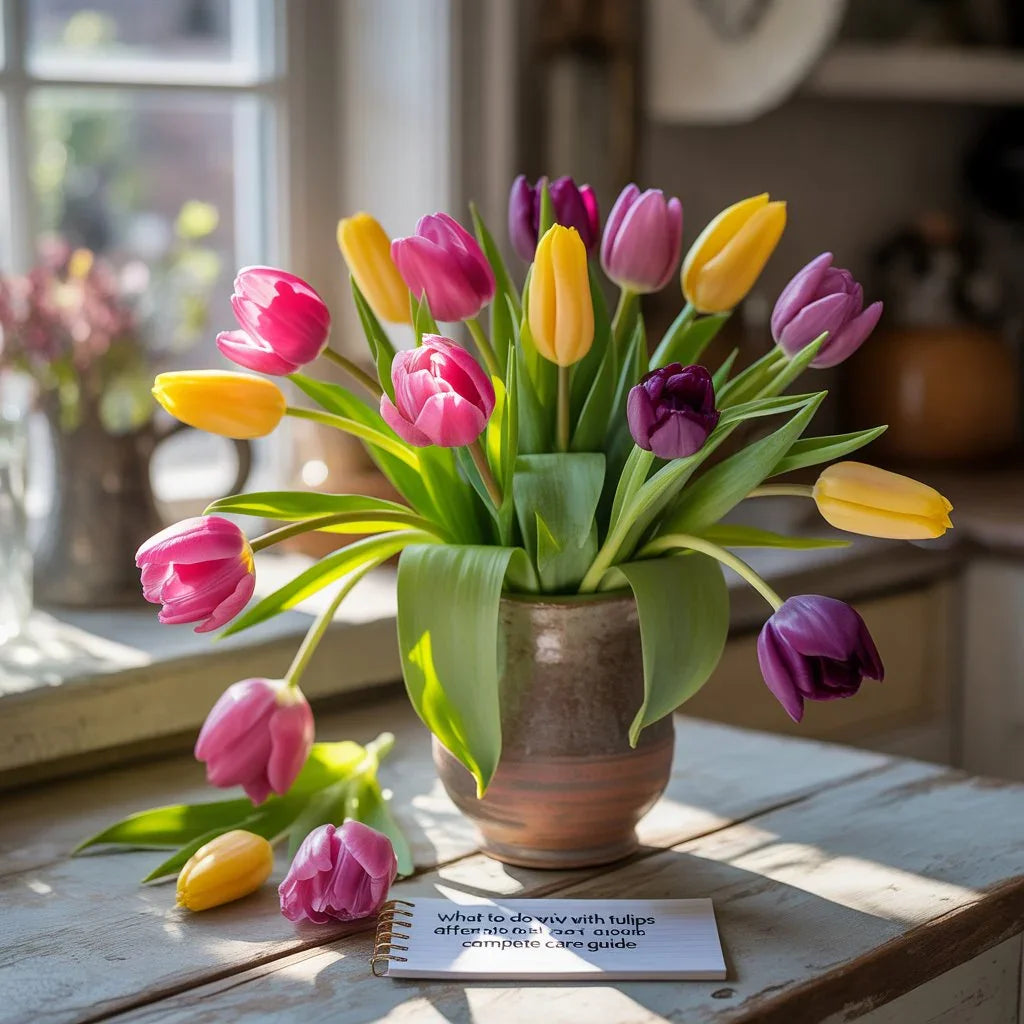
What to Do with Tulips After They Bloom: A Complete Care Guide
Share
When tulips finish their spectacular spring show, many gardeners wonder what’s next. Should you cut them back? Can the bulbs be saved for next year? Will they bloom again? Knowing exactly what to do with tulips after they bloom not only extends the plant’s life but also ensures even more impressive displays in future seasons.
At Black Petals, we believe every stage of a flower’s life matters—not just the bloom. Here’s how to handle tulips after flowering, preserve their bulbs, and prepare your garden for next year’s color.
Should Tulips Be Deadheaded After Blooming?
Deadheading tulips is one of the most important steps in post-bloom care. Once the flowers fade, carefully remove the spent blooms while leaving the foliage intact. This step prevents the plant from wasting energy on seed production and allows it to redirect nutrients into the bulb for the following season.
- Cut the flower head just below the seed pod.
- Keep the leaves in place until they naturally yellow, which usually takes about six weeks.
Following this process ensures stronger bulbs and more vibrant blooms next year.
Do Tulips Rebloom Every Year?
Tulips are technically perennials, but not all varieties perform the same way. In colder climates with defined winters, tulips often rebloom reliably. In warmer zones, they may be treated as annuals, with gardeners planting fresh bulbs each fall.
If you want to encourage reblooming:
- Select perennial varieties such as Darwin hybrids.
- Provide nutrient-rich soil with good drainage.
- Follow proper deadheading and post-bloom care to feed the bulbs.
How to Store Tulip Bulbs After Blooming
If you plan to dig up and store tulip bulbs, timing and preparation are crucial:
- Wait until the foliage has completely yellowed to ensure the bulb has stored enough energy.
- Lift the bulbs gently with a garden fork, taking care not to damage them.
- Allow the bulbs to dry in a shaded, airy place for several days.
- Store them in a mesh bag or paper sack in a cool, dry location until fall planting.
This method prevents mold and keeps bulbs healthy for the next growing season.
Do Tulip Bulbs Multiply?
Many tulip varieties naturally multiply underground, producing smaller “offset” bulbs around the main bulb. While this is beneficial for expanding your display, overcrowding can reduce bloom quality.
- Dig up and divide bulbs every few years.
- Replant the healthiest ones and discard any that are damaged or diseased.
- Use offsets to expand your garden or share with friends.
Can You Replant Tulip Bulbs?
Yes, tulip bulbs can be replanted after proper storage. Gardeners often replant bulbs in the fall, which aligns with their natural growth cycle and ensures the strongest blooms in spring. Replanting is especially useful when rotating or refreshing flower beds.
Post-Bloom Tulip Care Tips for Healthy Bulbs
- Keep foliage intact until it naturally yellows to feed the bulb.
- Fertilize lightly after flowering to replenish nutrients.
- Water sparingly once flowering ends to prevent rot.
- Mark bulb locations to avoid disturbing them during summer gardening.
Final Thoughts: Preparing Tulips for Next Season
Tulip care doesn’t end when the petals fall. By deadheading, preserving bulbs, and managing storage properly, you ensure next year’s display is even more spectacular. Whether you keep bulbs in the ground or lift and replant them, these steps transform a fleeting spring moment into a tradition that returns year after year.
